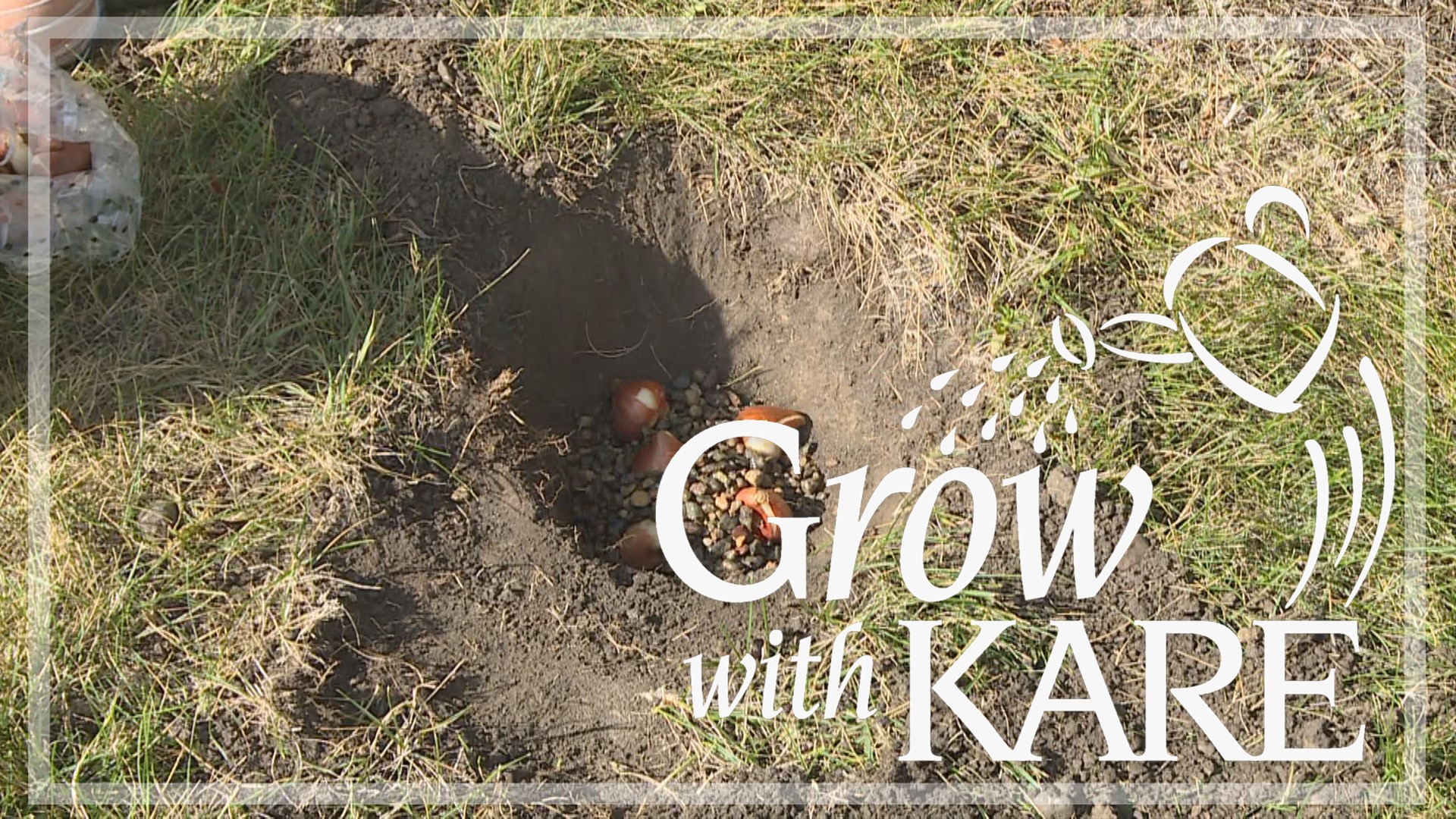GOLDEN VALLEY, Minn. — There’s nothing worse than putting in some hard work planting bulbs in the fall just to have them eaten by chipmunks, squirrels or the many other creatures who love them as a snack. Follow these tips now to avoid heartbreak come spring!
1. When planting, put a 1-inch layer of pea gravel in the hole just above and below the bulb before filling the rest of the hole with soil. When a small creature is digging and encounters the gravel, it often isn’t worth the work to them to have to dig through rock for your bulb and they move on. This also helps with drainage, which is a great thing for bulbs that do not like soggy conditions.
2. As an alternative or in addition to the pea gravel, a layer of hardware cloth works in the same fashion. A digging critter will give up when it reaches a layer of metal mesh before making it to your precious bulbs. To make this easier, dig one big hole for planting several bulbs at once, instead of individually. Bulb baskets are also sold online and work in a similar fashion.
3. Next tamp down the soil and cover with a 2-inch layer of mulch. Loose, bare soil is an invitation for an unwanted guest to dig!
4. Skip the fertilizer. It can attract pests and your bulbs don’t need it anyway.
5. Tulips are notorious for being eaten, but daffodils, hyacinth and allium are much less appealing to critters. Keep your tulips safe by planting them along with one kind or several varieties of the less tasty bulbs.
Get your bulbs in the ground anytime now until the ground freezes! Next week we’ll talk about lasagna planting for spring bulbs!
Watch more of Grow with KARE:
Watch the latest gardening tips and tricks in our YouTube playlist and don't forget to join the Grow with KARE Facebook group:

